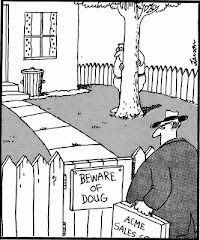It opened with a video of a horse galloping and how the artistic world, up to that point, perceived horses as "flying" across the ground with their legs extended. And then pointed out the misconception. Prior to the film, made in 1878 (I believe), the general consensus (among artists, one suspects) was that horses made a leap where their legs were stretched out fore and aft and that it was this point where all four hooves are clear of the ground. After the the perception was clearly shown to be erroneous, artists began painting the horses motion "correctly."
This photo shows the time all four hooves of the horse are off the ground.

I took this photo in the summer of 1976 with a Pentax 35mm SLR with a telephoto lens, ASA250 B&W Agfa film, and a speed of 1/400 at Del Mar racetrack. I was not trying to prove the point once again (so many had done that before me), it was quite by accident that I captured that point in the horse's gallop.
But the blog post conjured up the image and I had to look at my picture in comparison to the still images from the post.

There are actually four stills where the horse's hooves are off the ground. But watching a horse gallop, it would be difficult for the mind to sort out where that happens. So, I think we equated it to our own two-legged "gallops" where we do make that leap as our legs are stretched. But two legs are not four and the dynamic is different.
Our perception, therefore, was distorted by our preconception. Which goes back to my (all too) oft-repeated adage... we see what we wish (or want) to see.
I have a friend with whom I occasionally play golf. He is a big guy with lots of power who cannot bring himself to swing easy. Instead, he gives into the desire to hit the ball as hard as he can off the tee. The result is often unpredictable beyond the fact that it will go a long way. The direction is never known until after the ball leaves the tee.
He swears he can see the ball as it is compressed by the face of the club. I swing much slower (and, yes, my drives are much shorter) and I cannot even get a real glimpse of the impact. Does my friend really see the ball being hit? Or does he just believe he does? Did the magician really pull that rabbit from the hat?
How do we change our perception without someone else breaking through that preconception for us?







10 comments:
I love the story about advertising great, Bil Bernbach, who used to keep a piece of paper rolled up in his wallet, which he would pull out whenever he met his wit's end in arguing with a client. On it was written, "Maybe he's right."
I am not sure how that applies to the question but I suspect it does. Maybe
by keeping one's mind open to other possibilities. that would seem a
reasonable way to short circuit preconceptions. But then what happens to
confidence and consistency of belief?
--------------------------------------------------
The ultimate in confidence is not worrying about what others think, if you have given the subject due and ample consideration. The consistency need only be internal, not external.
Do we not respect those who remain firm in their beliefs? Well, so long as
those beliefs do not diverge much from our own, that is.
I suspect that many in society do. I personally prefer those who challenge their beliefs and the foundational underpinnings, every single day.
If consistency should be internal then how does one question and be
consistent at the same time? And why question if the "ultimate in
confidence is not worrying about what others think"?
Maybe Rumsfeld was being very wise when he said: "[T]here are known knowns;
there are things we know we know.
We also know there are known unknowns; that is to say we know there are some
things we do not know.
But there are also unknown unknowns – the ones we don't know we don't know."
--------------------------------------------------
You wrote:
"If consistency should be internal then how does one
question and be
consistent at the same time? And why question if the "ultimate in
confidence is not worrying about what others think"?
I'll address the first question now, and the second later.
(A heads up - focus on the judge in this response.) In the law, if a party makes a motion requesting that the judge do something or rule a particular way, the party must submit moving papers containing the evidence, the law, and the party's arguments. The opposing party then responds with the same. The judge then rules on the motion in one party's favor or the other.
Most folks think that the party which did not get the ruling in its favor would then appeal to a higher court consisting of different judges. However, in many states, the party can bring another motion, called a motion for reconsideration. You might ask, why would a judge reconsider his or her ruling>
First of all, it may have been a close call during the underlying hearing, but that's not good enough. The party must produce some additional facts/evidence or law which would justify the judge changing the ruling, and explain why that stuff was not available and submitted prior to the original hearing.
In the real world, when we reconsider our beliefs, we don't have this tough standard to apply even before the reconsideration. We get to question ourselves every single day. If we make a change in position or adjustment, we should be able to explain to ourselves (like the attorneys to the judge) what changed or what additional info we have at our disposal which justifies a change in position. I can explain the move from A to A1, to A2, to A3, to B, to C, to D, to Ca, etc. That's internal consistency.
I'll be honest, I understand (and understood) the comment. I also understand
the meaning of your example.
As with so many things, the phrase "it depends" crops up. We (generic "we")
can, and do, question ourselves. We second-guess our decisions all the time.
But we think that leaders who do this "every day", especially when they
change their minds, are "flip-floppers" or "indecisive." We don't even like
that we second-guess our decisions, do we? At some point, we want to be
decisive, to make a choice and stick by it, right or wrong. We want our
leaders not to be like "us" but like the ideal "us", the "us" who can
quickly and accurately size up complex situations and make the right
decisions in a timely fashion.
Judges are not leaders. Judges react. They react within the guidelines (the
law) and precedence. They may revisit a case, as you say, but rarely
unilaterally. They are, therefore, forced to act (forced to make a decision)
by others.
--------------------------------------------------
Nice photo. Yours is almost exactly equivalent to Frames 2 and 3 of Muybridge's one century before you.
What your friend says about the golf ball reminds of what Morihei Ueshiba, the founder of Aikido, used to say about bullets and other attacks on his body, all of which he always avoided. Aidido is in fact based on just such an intuition. Whether it is based on correct perception or not, it appears to be practical, or useful, in helping the perceiver/imaginer "channel" energy. Something, clearly, is going on in the human brain of an Aikiido master or golf pro that would be worth studying. (but let's not ever ask either of them to testify about it aferwards.)
I agree. I don't think he actually sees it but he certainly believes he does
and I cannot prove he doesn't actually see it happen. I am reminded of the
fact that my son (at about age 7) could read the street signs from the other
end of the block whereas I could only (at about age 31) tell that the street
sign was there. Our perception is often our reality.
--------------------------------------------------
Post a Comment